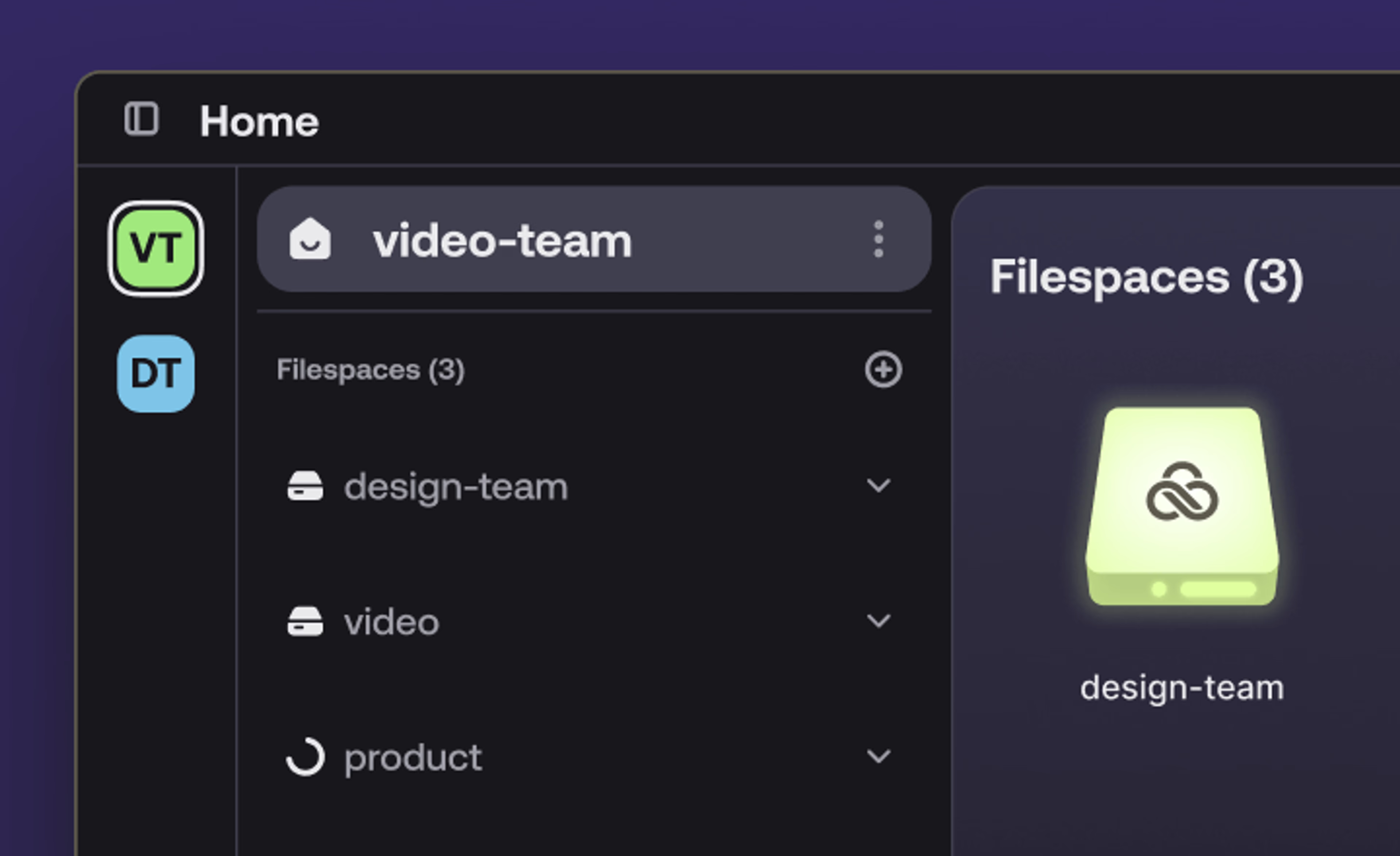Remote collaboration: how to effectively work with remote teams
April 2024
8 mins

Effective remote collaboration is becoming increasingly important for teams as more companies leave their physical offices behind. But when your colleagues are spread across the globe and time zones, communicating can be challenging. Setting up the right systems and proactively establishing solutions for the potential difficulties of remote work can set a team up to collaborate successfully. Below, we cover some of the challenges and solutions for remote team collaboration.
What is remote collaboration?
Remote collaboration means the ability to engage as a team member from anywhere in the world. This requires the right systems and technology to enable a company’s work to take place fully online. Remote collaboration is effective when team members communicate well on projects, maintain productive processes, and are on the same page about a project’s status and priorities.
Digital tools play a big role in ensuring remote collaboration runs smoothly and in streamlining team members’ workflows. Often a team will have several software that serve different purposes. It is important that everyone is on the same page about how each tool works and the expectations regarding how they are used. Establishing communication and workflow expectations in advance will help ensure remote collaboration is efficient.
The benefits of remote collaboration

For companies, there are several major benefits to remote collaboration:
Cost savings (no office and other associated overheads): A distributed team eliminates the need for overhead costs, which are often a company’s largest expense. For smaller companies, startups and new businesses, remote collaboration makes it possible to keep costs low in the early stages of growth.
Employee satisfaction: Many employees also prefer to work remotely for a number of reasons including flexibility and not needing to commute. According to a PEW Research survey, 71% of people who work from home find it helps them balance their work and personal life.
Increased Productivity: A report by the National Bureau of Economic Research shows the majority of time saved by working from home and avoiding office commutes goes toward increased productivity.
Time-zone coverage: When a team is spread out across different time zones, work can be completed 24/7, which can increase overall execution speed. For example, in the Media & Entertainment sector, post-production often takes place under very tight deadlines, and it is helpful to have people based in different time zones to complete the project.
Global talent: Working remotely allows a team to find and hire top talent, regardless of where they are based. It expands hiring possibilities to around the globe rather than being limited to the location where the company is based.
Flexibility to scale business up or down based on demand: When you’re not locked into an office lease, it’s a lot easier to scale based on demand. This is especially relevant for service businesses and creative agencies that may be growing quickly and need to hire new talent or work with contractors on a specific project.
The challenges of remote collaboration
From troubleshooting technology issues to juggling different schedules and time zones, there can be several challenges to setting up an effective and productive workflow for a team.

File management
When team members are scrambling to find the latest version of a file buried in folders stored on the cloud or local disks, is usually when they wish they had a single source of truth for their files. The problem is amplified when the files are large, for instance, video or other types of rich media. Sync & share cloud solutions like Google Drive and Dropbox require each new version to be uploaded before another team member can download it in order to edit it. This can take hours and destroy productivity and motivation in a remote team.
Difficulties in remote communication
One of the challenges of remote collaboration is fostering a sense of community among the team. It can be difficult to feel connected to your colleagues when you don’t see each other in person. Communication may also get lost in email and texts.
Scheduling mismatches
Remote teams that are spread out all over the world may find it challenging to communicate under deadlines and stay in sync, especially if they do not have overlapping working hours. Additionally, it can be difficult to coordinate meetings when people only have a limited amount of overlapping work time.
Navigating the tech stack
In a typical day, a remote worker likely relies on four to five programs, according to one survey. For example, a video editor might use Adobe Creative Cloud to edit videos, Slack to communicate with the team, Asana to manage tasks and Notion to take notes. It can be challenging to get everyone on the same page regarding project management systems and workflows so that the team doesn’t spend excessive time on “work about work”, or all the tasks that involve setting up your workspace (e.g., finding files, figuring out which version is the final draft).
5 ways to collaborate effectively with a remote team
From the tech stack that makes remote collaboration run smoothly to fostering effective teamwork, here are five ways to improve working remotely.

Make it easy to access and share (the right) files on the cloud
Remote teams will need a method to share and collaborate on files. If there are multiple people making edits on one file you’ll want to make sure there’s an established process for editing. A Sync and Share tool like DropBox or Google Drive could be a solution for smaller files like Word documents. However, when it comes to very large files like video, a file transfer system like WeTransfer or a storage collaboration platform like LucidLink can help speed up the remote video editing workflow. With LucidLink in particular, edits can be made directly on the cloud, which cuts out the need to download and sync files, streamlining the workflow and boosting productivity.
Establish systems that reduce busy work
During onboarding, you’ll want to make sure new team members learn how to get up to speed with the company’s current workflow systems. This will prevent time from being wasted sorting through duplicate files, unused folders or duplicate tasks. Make sure everyone follows the same naming convention for files and that it’s clear which version is current.
Create remote communication guidelines
When you’re working remotely, you can’t go up to someone’s desk to ask them a question. But you can send them a quick message. There are many aspects of communication a team should consider when setting up effective remote collaboration. For example, do you share team-wide memos by e-mail or Slack?
Communication guidelines are particularly important when people are working in different time zones. Some companies choose to have flexible hours but ask that the entire team be online for a certain window of time (1pm to 4pm EST, for example) to help make it easier to set up meetings. Writing out guidelines for communication will help ensure everyone is on the same page, particularly during onboarding.
Finding the balance between video calls and focused work
Encouraging team members to set up their schedules so that they can produce their best work is another way to establish a positive work culture. For example, creative team members often benefit from long blocks of uninterrupted time for concentration or “deep work”. Blocked off time without meetings fosters a flow state which helps creatives generate their best work.
In his often-quoted blog post, Maker’s Schedule, Manager’s Schedule, Y combinator co-founder Paul Graham discusses how makers (creatives, coders and other workers whose work requires deep concentration) seek uninterrupted blocks of time while managers operate their schedule in hourly intervals. While a half-hour meeting may seem like no big deal for a manager, for a creative or “maker” it can be detrimental to establishing workflow. “A single meeting can blow a whole afternoon, by breaking it into two pieces each too small to do anything hard in,” Graham wrote.
As a team, you can ensure creatives have the time they need to do their best work by encouraging people to block out focus time on their calendars. This also gives employees flexibility as it allows them to designate the time of day they are most productive for creative tasks.
Organization and advanced planning will streamline remote collaboration
As a team, you’ll want to consider the tools you use on a regular basis and establish systems to make sure everyone is on the same page about how they are used.
There are countless project management platforms, but they are only effective when you actually use them. It’s easy to set up an Asana board and tell the whole team “this is where project updates will be posted”, but it’s another thing entirely to actually follow through with new workflows. Choosing the right project management tools for your team that are both helpful and practical will be an essential part of remote team collaboration.
A lot of this is trial and error. You might find that there’s excitement about using a new tool only to discover a few months later that no one actually uses it. It’s helpful to check in regularly about what’s working and what’s not and shift gears quickly so you can find the right solutions for your team.
With the right tools and mindset, remote collaboration can bring major benefits
In a short period of time, companies that could never imagine leaving a physical office are now working fully remotely. Working virtually offers many benefits like cutting down a company’s overhead costs, allowing a team to find and hire top talent regardless of where they are based, and giving employees more flexibility. Additionally, some of the challenges that were considered deal breakers for remote work a couple of years ago, like easily accessing and collaborating on large files, have been solved with platforms like LucidLink.
Want to discover how LucidLink can help streamline remote collaboration? Try for free.
Keep reading

How The Finish Line reclaims time to make work-life balance a reality
Discover how The Finish Line uses cloud workflows to support remote post-production, creative collaboration and make every second count.
10 April 2025, 6 mins read

What is LucidLink and how does it work?
Learn all about LucidLink, the storage collaboration platform that gives teams instant, secure access to files from anywhere.
27 March 2025, 8 mins read

Marketing asset management: how to stop wasting time & money
Stop wasting time searching for files. Discover how marketing asset management streamlines workflows and keeps your team focused on creating great work.
20 March 2025, 10 mins read
Join our newsletter
Get all our latest news and creative tips
Want the details? Read our Privacy Policy. Not loving our emails?
Unsubscribe anytime or drop us a note at support@lucidlink.com.